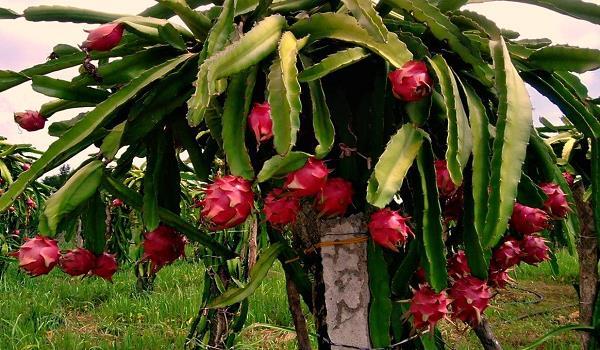Indian state of Gujarat wants to give dragon fruit a new name
India
Tuesday 26 January 2021
FJ
Few Indian farmers cultivate dragon fruit but the demand is huge. India imports 95% of its needs from Thailand, Malaysia, Vietnam and Sri Lanka (Photo: tridge.com).
According to policymakers in the Indian state of Gujarat, a new more appropriate name could strengthen the cultivation of this fruit in the state and could help reduce the country's dependence on imports.
Vijay Rupani, CM (Chief Minister) of Gujarat proposed to rename dragon fruit to “Kamalam”. This word in Sanskrit means "who is like a lotus" and seems appropriate because the characteristic pink "spikes" or "petals" of the fruit are reminiscent of a lotus in bloom.
Dragon fruit is the fruit of a species of wild cactus native to South and Central America, where it is called pitaya or pitahaya. The world's largest producer and exporter of dragon fruit is Vietnam, where the plant was brought by the French in the 19th century. The Vietnamese call it thanh long, which translates to “dragon eyes”, which is believed to be the origin of its name in English.
Dragon fruit is also cultivated in Thailand, Taiwan, China, Australia, Israel, and Sri Lanka. It was introduced to India in the 1990s and is cultivated in the states of Karnataka, Kerala, Tamil Nadu, Maharashtra, Gujarat, Odisha, West Bengal, Andhra Pradesh, as well as the Andaman and Nicobar Islands.
In the state of Gujarat, farmers in Kutch district have started cultivating dragon fruit and adopting innovative practices. The common name of the fruit is reminiscent of China, and the name change could encourage growers to expand and strengthen its cultivation as well as reduce the country's dependence on imports.
The Gujarat CM's proposal, however, requires the approval of the Botanical Survey of India and the National Biodiversity Authority. "The dragon fruit is not a species native to India and any modification of its nomenclature in the official records can lead to international disputes" specified the ICAR (Indian Council of Agricultural Research).
source : indianexpress.com, news-24.fr, kutchagro.com





